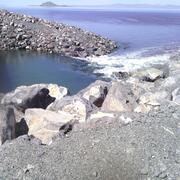Great Salt Lake
Great Salt Lake Hydro Mapper
Deep Brine Layer and the Railroad Causeway that Separated the Lake
The Great Salt Lake is a kaliedoscope of colors and conditions. You may never see the same thing twice but you will never forget each moment you are there. It is a remnant of its former self, Lake Bonneville, and patriarch to its future self. Visit the lake and it will never cease to amaze.







